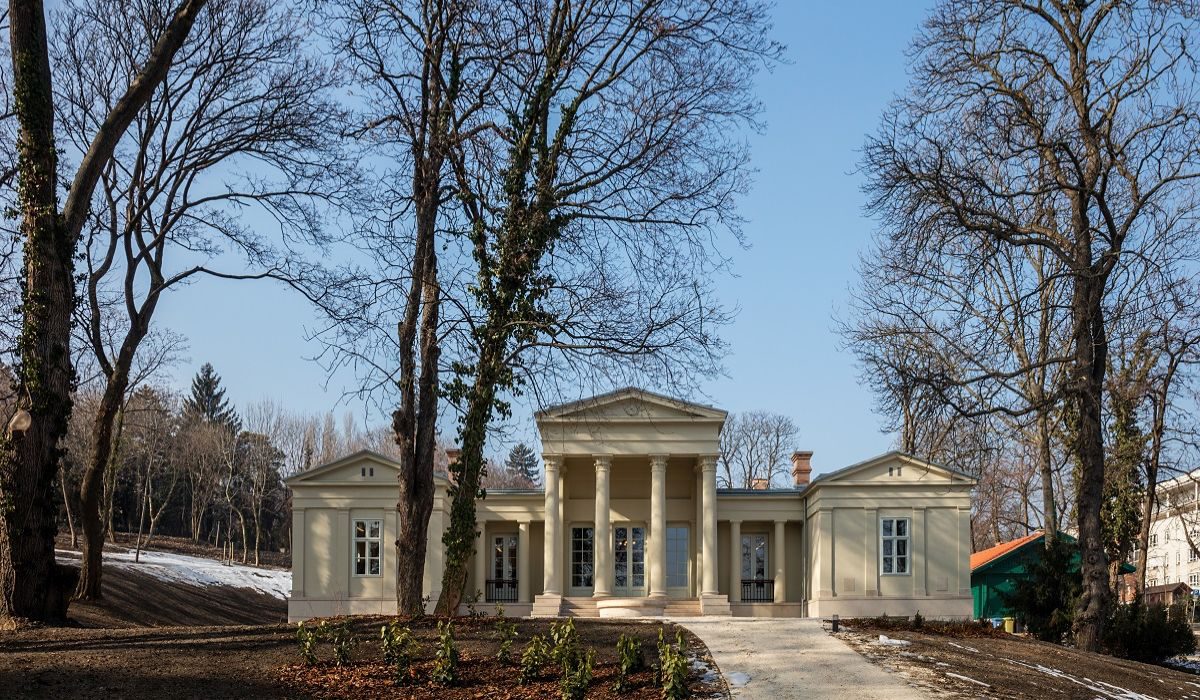An Arc of Time
Reconstruction and Extension of Hild Mansion in Budakeszi Road
Architect: László Kokas
Text: Miklós Sulyok
Photos: Tamás Bujnovszky
József Hild, one of the most productive architects of Hungarian architectural history designed this mansion for his own family in 1844. As it was customary then, it was meant to be a holiday home, and it had been a lot more modest than it is today. Originally, it was accessible via an elegant entrance with a portico on both sides of the reception hall, much like castles, behind each of which there was only one room. However, as a result of the new renovation project, László Kokas and his fellow architects started to work on it three years ago to suit it to house a research centre specialized in art theory. It had been extended and remodelled several times since its completion as a holiday home. The construction scheme included management offices, lecture halls, a library and other rooms. The concept of the architect to renovate the structure in decaying and very badly deteriorated conditions ambitioned to restore the clarity and balance of Revivalist Classicism as an authentic historic building. Not only to conserve it like a museum, in a sterile but reserved way whilst also rejecting the application of technicist architectural forms as well as the preference of novelties and innovations for their own sake. The mansion was treated like a building from the age of Hild regarding both the exterior and interior by preserving what could be preserved from this building reconstructed several times, whilst extending and enriching the house and its furniture with its own contributions in a natural way. On entering the building, one is impressed by the magnificence of the imposing enfilade-like spatial system perpendicular to the axis of the entrance door which is entirely exposed now thanks to the concept of the reconstruction project worked out by Kokas. Of the interiors it is only the foyer where it is possible to evoke the age of Hild which has preserved its original dimensions by the furniture, the finely elegant earth colours of the textile wallpaper, the band of the grisaille technique painting with rosette-motifs wrapping around in a band, the modestly sized chandelier and the wainscot of the plinth. An accentuated component of the interior design is the modular system of furniture designed by Kokas himself such as the wardrobes and the tables of the research units, which are well-proportioned but have modern, and even timeless characters, the system of the library shelves, the storage cabinets in the corridors, all of which feature high-standard design and execution. A modern building was born within the old one, which serves the functions of the research institute it is meant to house with its timeless weight and seriousness, showing an example to the architectural potentials of reconciling the past and the present.
- General design: Kokas Műterem Kft.
- Leading architect: László Kokas
- Architects: Ignác Kokas, Csaba Balogh-Farkas, Péter Lukács, Balázs Kokas
- Interios: László Kokas, Péter Lukács
- Structure: Csaba Lengyel – LCSL Kft.
- HVAC: Örs Szatmári, János Jagasics – Szatmári és Szatmári Bt., Csaba Érchegyi – Érchegyi Generál
- Electrical engineering: Zoltán Ivanics – Provill Kft.
- Gardening: Gábor Szabó, Nóra Orbán – Tér-Team Kft.










